Osteoarthritis (OA), also known as degenerative joint disease, affects more than 20 million Americans and is more common in women than in men. The disease affects the cartilage—slippery tissue on the ends of bones that meet in a joint. Normally, cartilage helps bones glide over one another as the joints move. In an OA patient however, the cartilage is broken down and eventually wears away. As a result, instead of gliding, bones rub against each other, causing pain, swelling, and loss of motion. Although the majority of patients with OA are 65 and older, recent research shows that osteoarthritis is not a by-product of aging.
Chiropractic Care


Most of us have experienced the throbbing or stabbing pain of a headache and because the head controls the rest of the body it is hard to ignore. There are several types of headaches and the exact cause can be complex.
Headaches are not normal. Recurring headaches are a sign that something is wrong and should not be ignored. Aspirin, ibuprofen and other medications may temporarily mask the symptoms but they do nothing to correct the source of the problem. As long as the problem remains the headaches will continue to come back. Pain is the body’s way of alerting us that something is wrong. It is unwise to ignore these signals and treat just the symptoms.

Bursitis is inflammation or irritation to the bursa (small sacs between bone and other moving parts, such as skin, muscles and tendons).
Tendonitis is inflammation or irritation of the tendon (thick fibrous cords that connect muscles to bone).
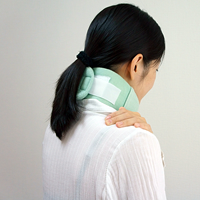
Whiplash is the term applied to injuries where the neck is rapidly jolted into flexion and then extension, creating a whip-like movement. Whiplash is most commonly seen in people involved in auto accidents, but it can also result from sports injuries, falls, workplace accidents, and other traumatic incidents.
Due to their complex nature and extensive impact on peoples’ daily lives, few topics in health care are discussed as frequently as whiplash injuries. Unlike broken bones or other traumatic injuries, whiplash injuries usually involve an unpredictable combination of nervous system, muscle, joint and connective tissue disorders. Because of this, whiplash is commonly misunderstood and can be confusing for patients.
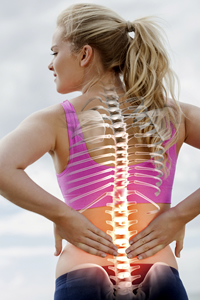
Musculoskeletal Disorders (MSDs) are a common and costly problem for people and companies across the United States. Musculoskeletal Disorders or MSDs are injuries and disorders that affect the human body’s movement or musculoskeletal system (i.e. muscles, tendons, ligaments, nerves, discs, blood vessels, etc.).
When a person is exposed to MSD risk factors, they begin to fatigue. When fatigue outruns their body’s recovery system, they develop a musculoskeletal imbalance. Over time, as fatigue continues to outrun recovery and the musculoskeletal imbalance persists, a musculoskeletal disorder develops.
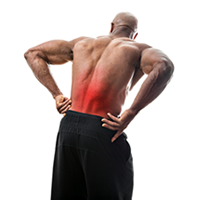
A common cause of low back pain can be problems with the disc, the fibrous cushion between each vertebra. A bulging or ruptured disc can irritate nerves that travel from the spinal cord. Leg pain, numbness, tingling or weakness in the legs may all be a result of disc irritation. Low back problems are more common in people who are in poor physical condition and those with jobs that include heavy lifting, long periods of sitting, standing or lots of bending. Emotional stress or long periods of inactivity may intensify symptoms or trigger the appearance of previous problems.
It is important to have back pain treated within the first month of the onset of the pain. Waiting until the pain is unbearable or immobilizing is not only unhealthy but may end up costing more time, stress and money in the long run. There is no reason to suffer longer than you must, and chiropractic care at Charlotte Chiropractic Center can help get you back to a pain free life!

Spinal stenosis is created by the narrowing of the spinal canal. This narrowing may be caused by mechanical problems or by abnormalities in the aging spine. It may or may not result in low-back pain, limping, and a lack of feeling in the legs. Stenosis is often a degenerative condition. It may exist for years without causing pain or discomfort, but a fall or an accident can trigger characteristic stenotic pain. Numerous factors can cause stenosis, such as thickened ligaments, expanding infection, abscess, a congenital or developmental anomaly, degenerative changes, vertebral fractures or dislocations, or a spinal cord tumor.

Temporal Mandibular Joint Dysfunction (TMJ), also known as TMD Syndrome, is a complex musculoskeletal condition involving the teeth and mandible in conjunction with the surrounding nerves, ligaments, connective tissue, and the 68 pairs of muscles that control the joint. TMJ Dysfunction symptoms can vary from case to case but those with the condition will often experience jaw pain, headaches, problems chewing, earaches, clicking and grinding, or difficulty opening/closing the mouth. According to the National Institute of Dental and Craniofacial Research, the disorder affects approximately 35 million people in the United States, with women experiencing it four times more often than men.
The Temporol Mandibular Joint (TMJ) combines a hinge action with sliding motions. The parts of the bones that interact in the joint are covered with cartilage and are separated by a small shock-absorbing disk, which normally keeps the movement smooth.
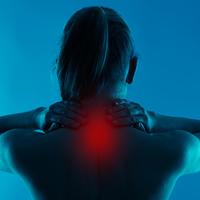
Neck pain can be common; there is a good chance that you have experienced some type of neck discomfort at one time or another. The neck supports your head, which can weigh 10 pounds or more! In addition to supporting your head it needs to be able to functionally move in all three planes of motion. Injuries and imbalances can cause cervical vertebrae to move out of their correct position (Subluxation). Tendons, ligaments and muscles can become inflamed and worn out, the discs separating the cervical vertebrae can herniate or rupture and the nerves can be damaged or irritated from the misalignment.
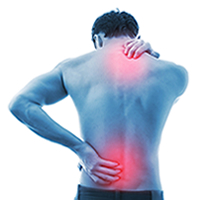
Sometimes called a “bulged” or “slipped” disc, a herniated disc involves damage to the tissues that act as cushions between the vertebrae. Without these soft cushions, vertebrae bones would not only scrape against each other but humans would be incapable of performing any type of movement without experiencing severe pain.

Scoliosis is a sideways curvature of the spine that occurs most often during the growth spurt just before puberty. While scoliosis can be caused by conditions such as cerebral palsy and muscular dystrophy, the cause of most scoliosis is unknown.
Most cases of scoliosis are mild, but some children develop spine deformities that continue to get more severe as they grow. Severe scoliosis can be disabling. An especially severe spinal curve can reduce the amount of space within the chest, making it difficult for the lungs to function properly.
Learning that your child has scoliosis can be frightening despite the fact that it is a condition that affects between five and seven million people in the United States alone. Suddenly being faced with the prospects of corrective treatments and talks of bracing or even surgery can have any parent on edge, but surgery is not the only option for the treatment of scoliosis. For many patients, chiropractic care can be extremely effective at correcting scoliosis and alleviating the pain that can be associated with the condition. Any serious medical diagnosis is scary for a parent, but knowing your options and the benefits afforded by routes that do not involve going under the surgical knife can help you to make the right decision for your child.

Neuritis, bursitis, neuralgia, rheumatism, frozen shoulder, fibrositis, sprain and strains are common terms that refer to neck, shoulder and arm conditions. The main controller behind your shoulders, arms and hands is the brain. The brain communicates to the rest of your body through billions of nerves that make up your nervous system. Some nerves go straight to their destination point, but others mix with other nerves to form complicated nerve networks called a ‘plexus.’ The brachial plexus is made up of nerves that come out of the middle and upper back that supply information to the shoulders, arm, elbows, wrists, hands and fingers.

The debilitating condition known as sciatica is the result of compression or irritation on the major nerve that originates in the low back and supplies each leg with innervation (To stimulate a nerve, muscle, or body part to action). This nerve interference is most often triggered by an injury or misalignment in the spine, either putting direct compression on the sciatic nerve root or causing a bulge (or herniation) of a disc, which then in turn causes compression on the nerve.
The most common complaint associated with sciatica is a burning pain running from the low back to the lower legs. Nevertheless, there can be a variety symptoms experienced with sciatica depending on the specific nerve fibers are being affected including numbness, aches, tingling, or weakness. Sciatica patients also often describe a “pins and needles” sensation in the feet.
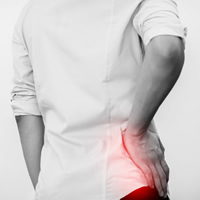
Our hips serve innumerable functions for our body; they keep us upright, allow us to bear weight, walk smoothly, run, jump, kick, play. Since the hips are engaged in nearly every way we move, pain in this area can have debilitating consequences for patients. Although hip pain is frequently the result of osteoarthritis or injury, it can also be a sign of other health conditions. A doctor of chiropractic can help you identify the source of your hip pain and develop a tailored treatment plan for your symptoms.

Knee pain refers to pain that occurs in and around your knee joint. Knee pain can be caused by problems with the knee joint itself, or it can be caused by conditions affecting the soft tissues — ligaments, tendons or bursae — that surround the knee.
The severity of knee pain can vary widely. Some people may feel only a slight twinge, while others may experience debilitating knee pain that interferes with their day-to-day activities.
The knee is a complex joint that relies heavily on ligaments and muscles for stability. When pain is perceived as coming from the knee, all the anatomical components need to be examined, and in addition to the knee joint, the low back, pelvis, hip, ankle and foot need to be examined due to the direct influence they have on the knee, and vice versa.

Plantar fasciitis (PLAN-tur fas-e-I-tis) is one of the most common causes of heel pain. It involves pain and inflammation of a thick band of tissue, called the plantar fascia, that runs across the bottom of your foot and connects your heel bone to your toes.
Plantar fasciitis commonly causes stabbing pain that usually occurs with your very first steps in the morning. Once your foot limbers up, the pain of plantar fasciitis normally decreases, but it may return after long periods of standing or after getting up from a seated position.
Plantar fasciitis is particularly common in runners. In addition, people who are overweight and those who wear shoes with inadequate support are at risk of plantar fasciitis.

Carpal Tunnel Syndrome is named after the eight carpal bones in the wrist that form a narrow “tunnel” that allows the median nerve to supply the hand with innervation (To supply an organ or a body part with nerves.). This tunnel can be compromised by an acute or chronic injury to the wrist that affects the positioning of the carpals and causes compression on the median nerve. In most instances of clinical carpal tunnel syndrome, however, a secondary compression of these nerves due to alignment issues in the neck or shoulder turns a minor irritation into the numbness, swelling, loss of hand strength and shooting pain carpal tunnel syndrome patients experience.
A number of factors can contribute to carpal tunnel syndrome, including the anatomy of your wrist, certain underlying health problems and possibly patterns of hand use.
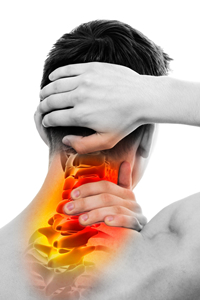
While the entire spine system, including the neck, possesses natural curves from the base of the skull to the sacrum (tail bone) it is not uncommon for people to progressively lose this curvature as they age. Because of this, some people seek the care of a chiropractor in an attempt to reverse this curve.
Cervical lordosis (curve with the concave side facing backwards) is the normal curve of the neck that develops in early childhood. Changes that occur to this curve, as evaluated on X-ray, are often the result of the normal aging process but may also be accelerated by poor postures. In some cases, people are born with a reversed curvature of the neck.
The loss of normal cervical curve is surprisingly common in patients who seek relief from neck pain, but it is often dismissed by healthcare professionals focusing more on life-threatening pathologies and less on findings which might develop into long-term chronic health problems.

If you haven’t heard about Tech Neck yet, also referred to as Text Neck, this has become a new buzzword in the health industry to describe a very common issue that impacts people today. Text neck is a condition that formed when you overuse your neck, back and shoulder muscles by keeping yourself in a hunched over position, typically the position that occurs when you spend a lot of time looking down and forward, such as you would when looking on a mobile device. When you keep yourself in this position, it can cause serious strain on the spine. Text Neck is more than just a cautionary tale that parents can use to keep their kids off their phones, it is a real issue and something that can cause daily pain and discomfort as well as life-long damage to your spine. While Text Neck is a real and serious issue, the good news is it is also one that can be improved with chiropractic care, if you take the time to visit your chiropractor and get the assistance that you need.

An ear infection (acute otitis media) is most often a bacterial or viral infection that affects the middle ear, the air-filled space behind the eardrum that contains the tiny vibrating bones of the ear. Children are more likely than adults to get ear infections.
Due to the overuse of antibiotics for this condition, however, the rate of antibiotic-resistant infections has increased in recent years. As a result, recommendations released recently by the American Academy of Pediatrics discourage the use of antibiotic medications for most ear infections in children.


